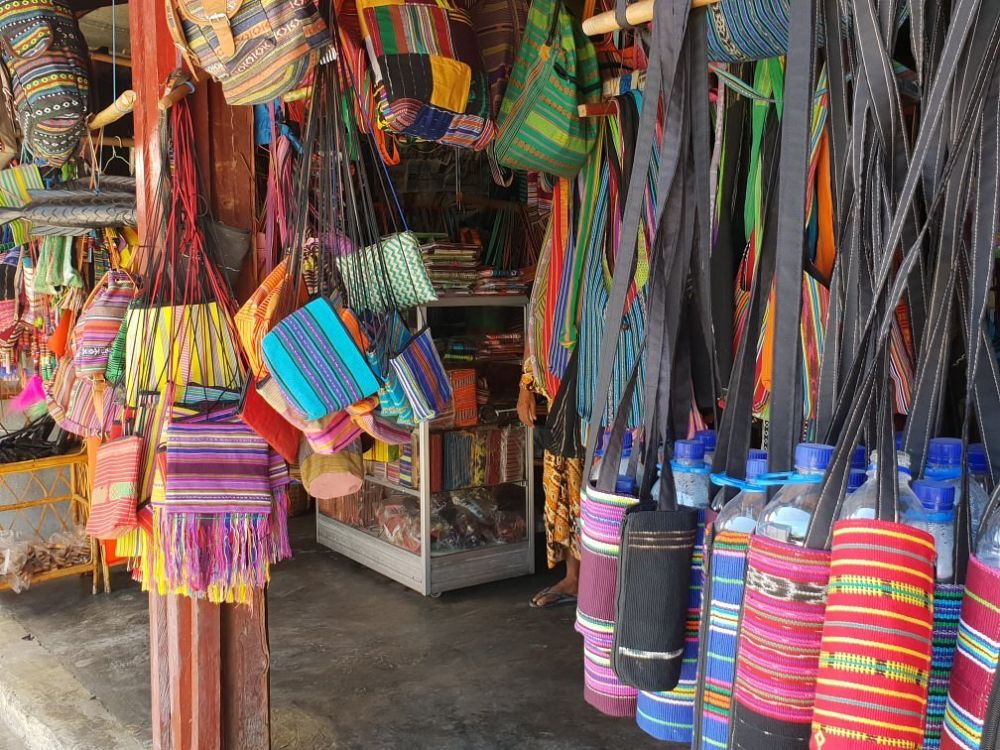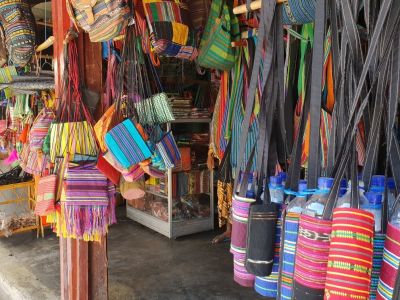

Ainaro is rich in culture and traditional arts, making it a perfect place to explore Timorese handicrafts. Visitors can wander the markets and find a variety of artisanal goods such as tais (traditional woven cloth), wood carvings, and pottery. These items are often created using techniques passed down through generations, reflecting the cultural heritage of Timor-Leste. The tais, in particular, comes in diverse patterns and colors, each unique to different regions or families. Shopping here supports the local economy and artisans, giving you a chance to purchase authentic souvenirs. You might also get to see artisans weaving or carving, giving you insight into their skilled craftsmanship.
Ainaro Traditional Markets are a great place to immerse oneself in the culinary tastes of Timor-Leste. Visitors can sample traditional dishes like batar da'an (corn and mung bean stew), ikan sabuko (spicy fish), and feijoada (bean and meat stew). Each stall provides a unique taste of Timorese cuisine, with vendors often using local ingredients and traditional cooking methods. As you stroll through the market, the aroma of freshly cooked food fills the air, inviting you to try something new. The experience of eating among the locals, listening to their languages, and observing the daily hustle of the market is an activity in itself, one that's equally educational and delicious.
Market days in Ainaro offer a vibrant and bustling atmosphere that brings the community together. Farmers and traders from surrounding areas come to sell their produce and wares, ranging from fruits and vegetables to textiles and spices. It's a great opportunity to experience the local commerce and do some grocery shopping just like a local. You'll find the freshest products at reasonable prices. Observing the bartering and exchange, chatting with stall owners, and maybe even trying your hand at haggling makes for a lively cultural experience. Images of pyramids of colorful produce and the sounds of market activity will stay with you long after your visit.
Timor-Leste is known for its rich, aromatic coffee, and Ainaro is no exception. Visitors can engage in coffee tasting experiences where they can sample locally grown coffee, typically known for its smooth, mild flavor and often organic. Coffee plantations are abundant in the surrounding areas, so the coffee at the market is exceptionally fresh. This is a unique chance to understand the coffee production process from bean to cup, learn about the different roasts, and see how Timorese prepare their coffee—often black, with a hint of sweetness sourced from local palm sugar.
Ainaro's surrounding countryside is dotted with fruit farms, and during harvest season, many of these fruits find their way to the market. Visitors can buy fruit like papayas, mangoes, bananas, and the more exotic soursop directly from the farmers. Some vendors may allow you to taste before you purchase. The experience of selecting your fruit, understanding its origin, and maybe learning a few words in Tetum (the local language) to communicate with the farmers is a charming aspect of visiting this market. It's an activity that engages all senses and provides a delicious souvenir to enjoy later.
The markets of Ainaro are a trove for those interested in natural healing and traditional medicine. Here, you can find a variety of plants, roots, and herbs with medicinal properties that are used in local healing practices. This is a fascinating opportunity to learn about Timorese ethnomedicine and how it is integrated into daily life. Vendors often share their knowledge about the uses of different items, and you may even witness the preparation of these natural remedies. Whether it’s a herbal rub for pain relief or a leaf infusion said to cure common ailments, this experience will deepen your understanding of the Timorese way of life.
For photography enthusiasts, Ainaro Market offers a wealth of opportunities to capture the essence of Timorese culture. The vibrant colors of fruits and vegetables, the intricate patterns of the tais, and the candid moments shared by vendors and buyers alike provide endless subjects for your camera lens. You can document the local life and market dynamics, taking care to be respectful and asking for permission before taking photos of people. This activity allows you to create a visual diary of your travels, capturing moments that represent the heart of Ainaro's community.
The Ainaro market can be a starting point for a hands-on cooking experience. After interacting with vendors and purchasing some fresh ingredients, visitors can take part in a local cooking class, often held by community members or local chefs. These classes introduce the techniques and traditions behind Timorese dishes, enabling you to prepare a meal from scratch. Learning to cook dishes like tapai (fermented rice), caril (curry), and batar da'an not only teaches you about the local food culture but also leaves you with skills to recreate the flavors of Timor-Leste at home.
Timor-Leste's pottery has a unique style, and Ainaro offers the chance to witness this craft up close. Visitors may find pottery-making demonstrations at the market or can even participate in a pottery workshop. You’ll get to learn about the different styles, functions, and motifs used in Timorese pottery. Engaging directly with the clay and learning how to mold and fire it using traditional methods is a deeply satisfying and tactile way to appreciate this aspect of Ainaro's cultural artistic expression.
For those looking to understand the depths of Ainaro's culture, a guided cultural tour can be a comprehensive activity. Knowledgeable local guides provide insights into the market's operating system, the significance of the goods sold, and how these markets play a role in Timorese society. The tour might include discussions with the locals, visits to significant landmarks in the vicinity of the market, and explanations of historical and socio-economic contexts that shape life in Ainaro. This educational experience is invaluable for gaining a deeper appreciation for the people and their traditions.
